Five months. 4,700 miles. 2,130 pounds of trash.
On April 26, 2017, Seth Orme and Abby Taylor set out on a cross-country bike tour to pick up trash. Beginning on Cumberland Island, Georgia, and ending in Seattle, they zigzagged across the U.S., cleaning up scenic areas and inspiring others to “leave it better” as part of the third Packing It Out project.
“Packing It Out in the last three years has essentially been a continuous mission to leave the people we meet and the places we go better,” said Seth, Packing It Out’s founder.
In 2015, Seth thru–hiked the Appalachian Trail (AT), along with his friends Joe Dehnert and Paul Twedt for the first-ever Packing It Out. Over the course of 2,200 miles, they carried out 1,100 pounds of trash. In 2016, Seth and Paul walked from the border of Mexico to Canada on the Pacific Crest Trail (PCT)—a total of 2,650 miles—cleaning up 720 pounds of trash.
This year, Seth traded the trail for the open road, alongside his friend Abby. Their journey was documented in “Leave it Better,” a new film presented by REI in partnership with Gear Junkie.
We caught up with them about the project, the strangest pieces of trash they found, and what they hope to accomplish through Packing It Out.
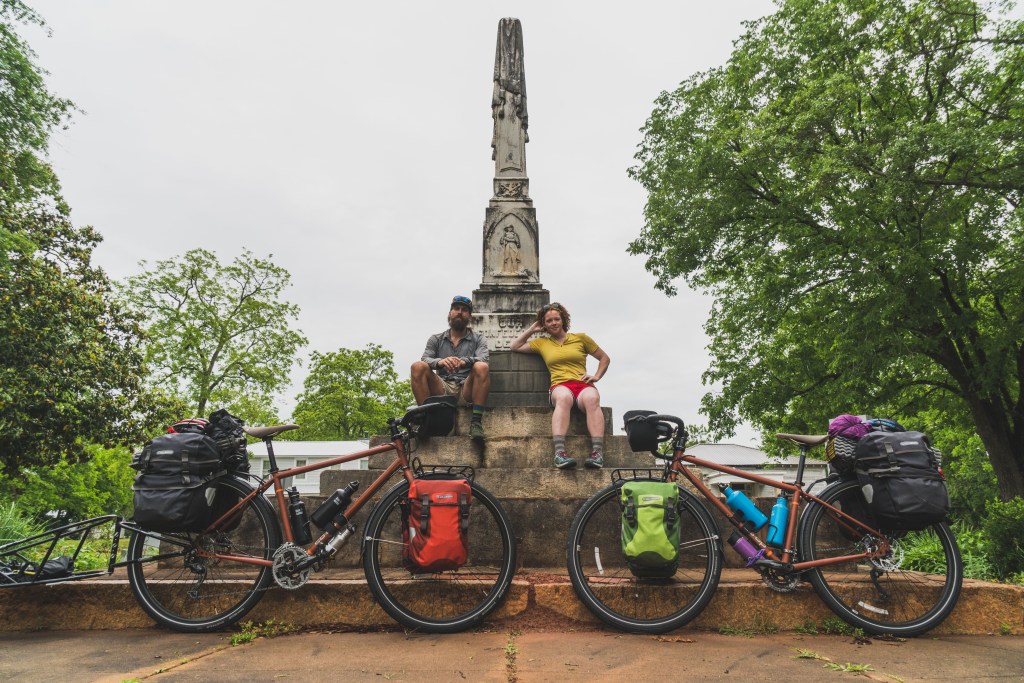
Seth Orme and Abby Taylor (Photo Credit: Seth Orme)
What is Packing It Out and how did the project get started?
Seth: The mission of Packing It Out is to inspire a greater sense of environmental stewardship and community by raising awareness for litter conditions along American trails. The idea of Packing It Out started as a result of working as an outdoor guide on Lake Superior—I noticed a lot of trash when I was going to these wild places. Thinking I should probably do something about it, I had the idea to hike the entire AT and see how much trash I could pick up along that thru-hike. That was the beginning of Packing It Out.
This year, you biked across the country and picked up trash. What made you switch from hiking to cycling?
Seth: The last two years, we’ve walked over 5,000 miles cleaning up scenic trails on foot. We were becoming really well-known in the thru-hiking and backpacking community. We wanted to try something different and get out of our comfort zone … and reach a different cohort of people, not just thru-hikers and backpackers.
What was the biggest difference between Packing It Out on foot versus on bikes?
Seth: We got to meet a lot of different kinds of people—people who don’t go backpacking or don’t use the outdoors in the ways we do. Obviously, the distribution of trash was much different along roads. Sometimes, we’d find a lot of crazy stuff that people were just throwing out of their cars, which you wouldn’t find on a trail like the AT.
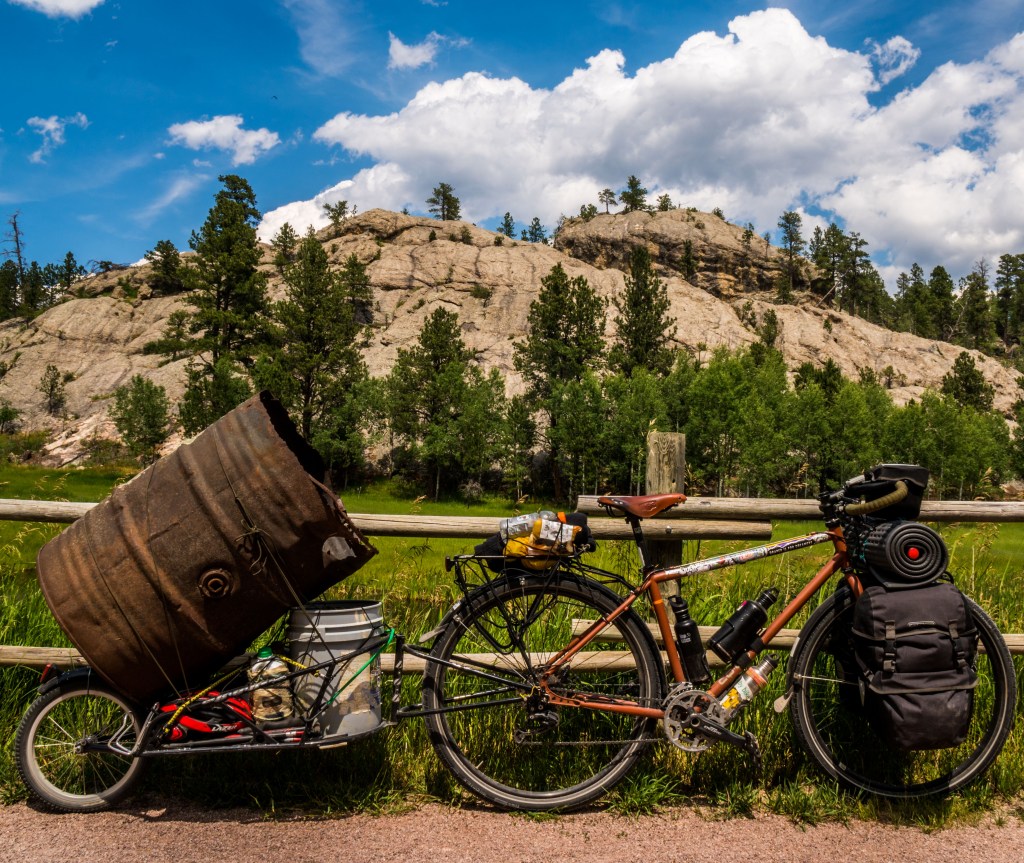
Photo Credit: Seth Orme
What was the strangest piece of trash you packed out?
Abby: We packed out two ceramic toilets. One was on the side of the road in Colorado and one was off of a cliff in a swimming area in Washington state. So, those were pretty odd to find.
How do you even begin to pack out something like that?
Seth: The first one, in Colorado on the Peak to Peak Highway, we carried out on a single-wheeled BOB bike trailer. I thought having that trailer just for trash would help open more windows to picking up things. When we found that toilet, I just used rope and a number of different knots and rigged it down. It didn’t fall off, which was good. The second one, which we found in Washington, we ended up carrying out by hand.
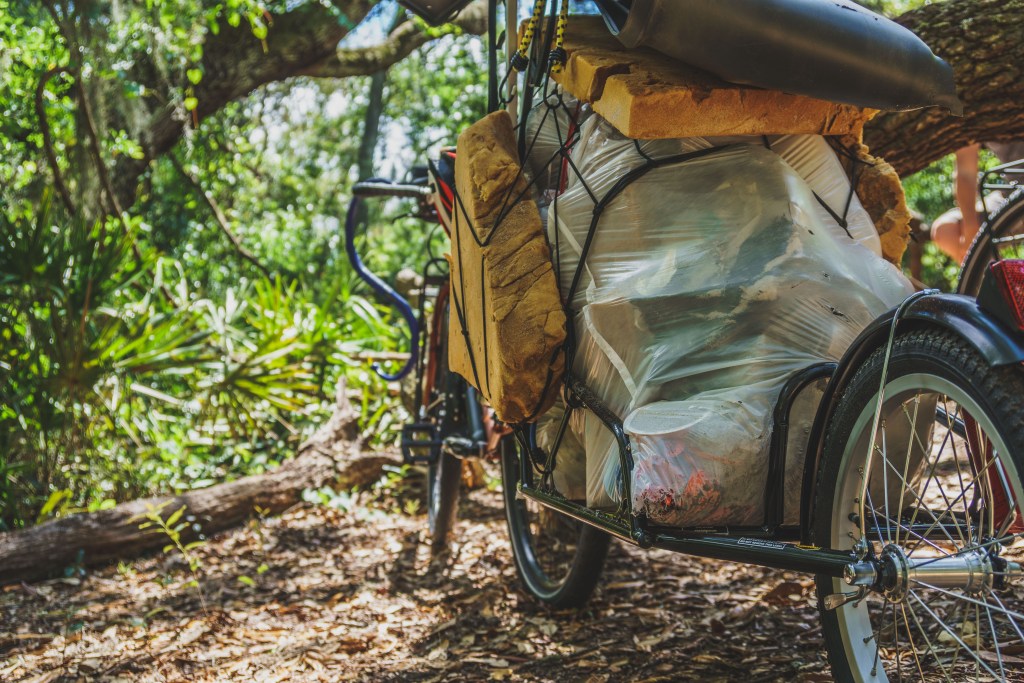
Photo Credit: Seth Orme
What was the dirtiest stop or stretch along the route?
Seth: At a Forest Service area outside of Nederland, Colorado, we packed out five truckloads of trash. We partnered with Sierra Designs and their crew. We had a huge crew of people helping, which made it manageable.
Abby: Road-wise, each state has its own culture. In Wisconsin, you just don’t see roadside trash, but in the South, we saw a lot of roadside trash.
What was the cleanest area you encountered?
Seth: A lot of national parks are pretty clean. We really focused on the roadsides in national parks and, while we still found trash, we didn’t find as much.
What was the biggest challenge you faced along the way?
Abby: Seth and I are really different. We quarreled a lot about the way that we ran our schedules and things like that. I’m a little more low-key, and Seth’s very driven. So, finding a balance with each other and how we wanted our trip to go was a challenge.
Seth: For me, the biggest challenge was trying to do as much as we did in the time that we had. For the last two years, we’ve been on long trails with a pretty linear path. We packed out everything that we saw. Realistically, this year, we couldn’t pack out all the roadside trash. We would literally still be there.
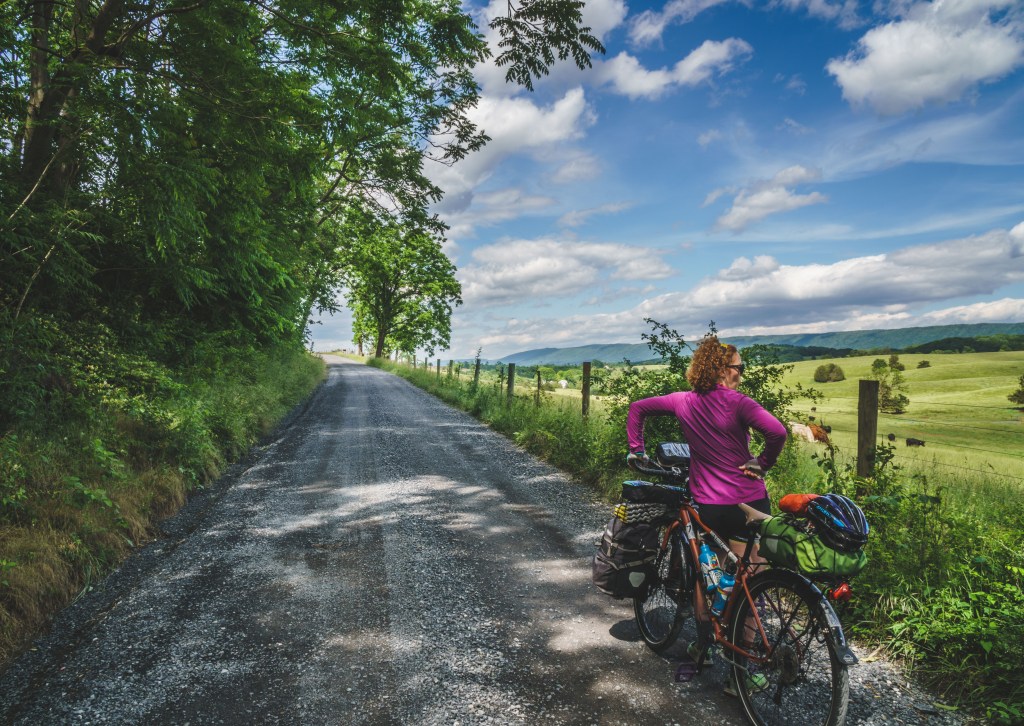
Photo Credit: Seth Orme
What was one of the toughest climbs?
Abby: Trail Ridge Road in Rocky Mountain National Park. That day came after we’d had a really long break for Outdoor Retailer trade show in Salt Lake City. We hadn’t been biking for a week or so and then hopped into the largest elevation gain we would have in the entire trip. I was struggling before we were even past the gates of Rocky Mountain National Park and didn’t think I could make it. Seth actually took some of my panniers and the weight off my bike. So, he pedaled a really heavy bike and I was able to do it. I think it took us, with breaks, six and a half hours to get up to the summit of Trail Ridge Road and about 45 minutes to get down the other side.
Seth: Yeah, I’d agree. That was a pretty challenging one. For me, from a physical standpoint, coming out of MacDonald Pass outside of Helena, Montana, was also tough. The pass itself was steep and it was very smoky from all of the fires this year. That was an extra blow, to try to breathe and climb.
You rode Co-op Cycles ADV 2.1 bikes the entire trip. How did the bikes perform?
Seth: Anything that needed to be adjusted or tuned up, the bike’s designed to be able to do that. Everything is mechanical, so it’s pretty simple to fix and work on. I have no complaints. I thought it was an excellent bike.
Abby: We rode the hell out of them. Put them on a lot of different roads. They really held up.
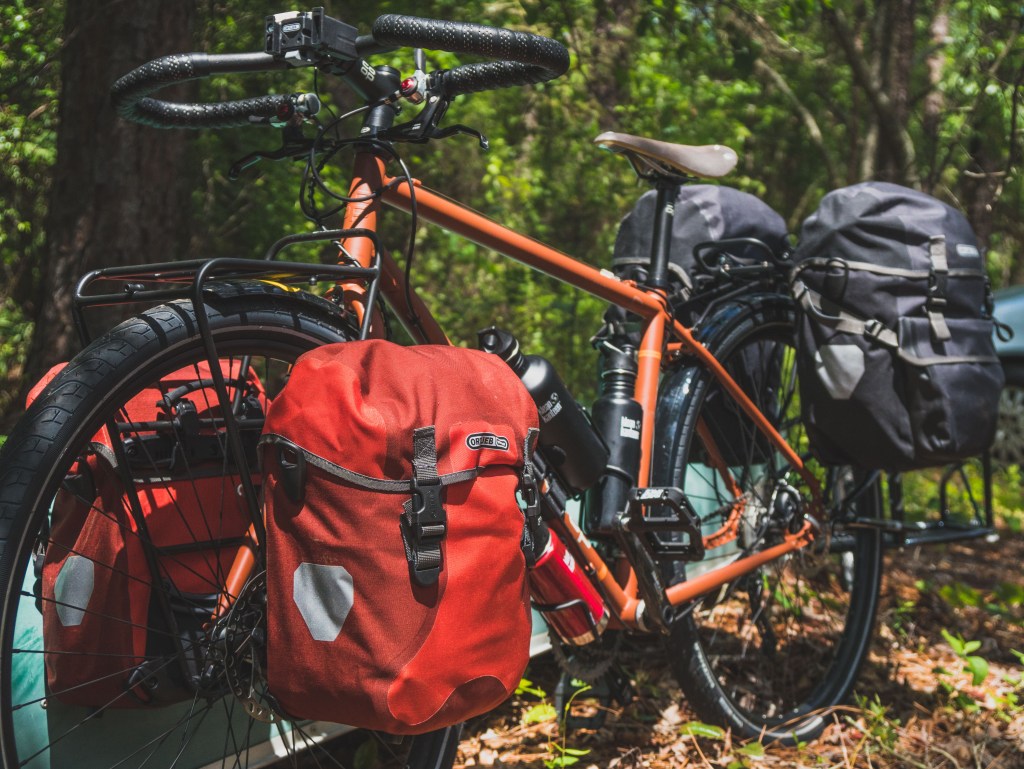
Photo Credit: Seth Orme
Can you describe your setup?
Seth: We added fenders, racks, Brooks saddles and the BOB Yak 28+ trailer. And flat pedals. We really wanted to be able to wear just one pair of shoes. We started out with four panniers, like the traditional touring rig. But having backpacked the past two years, I’m used to living out of one small pack. So, we ended up having two panniers in the front of our bikes with a top handlebar bag with all of our daily essentials, and that worked out great.
When people hear about your project, what do you hope they take away from it?
Seth: I hope they’re inspired. I hope they see that we’re doing this because we want to do it. Because we love the outdoors. That’s why we dedicate so much time to go out and sleep in the dirt and clean up trails. We want to see people inspired.
Abby: Inspired to go out to do stuff and inspired that they’re capable. If you’re passionate about something and you persevere long enough, everyone’s going to have different struggles and things to overcome, but if you continually get after it, things will start to fall into place and work out. Pursue those ideas that seem crazy or too big!

Photo Credit: Seth Orme
If people are inspired, what are some specific things they can do to help clean up the outdoors?
Seth: When you start looking around, you see a lot of trash. It can be pretty overwhelming. You’re like, “I’m inspired, but where do I start?” I always tell people: Start with one piece a day—whenever you go to work or for a walk in a park. What that does is lead to more pieces that you’ll pick up. But I think the more important thing is that you’ll start to inspire other people. You’re not going to clean up the entire world with one piece a day, but you might inspire other people to pick up a piece a day. And before we know it, we have new standards. I want it to be normal, not amazing, to see someone picking up trash because they love the outdoors. That should just be what we do because we care about our outdoors.
Abby: I hope inspired people will find their community. We were able to find so many local cleanup organizations. If you feel powerfully about your community, go look for other people who feel the same way.
What’s next for Packing It Out?
Abby: A break! Seth has dedicated his last three years to planning grand adventures and packing out trash, and thus needs some time to reevaluate. This winter, I’ll be enjoying my second season as a ski bum in Alta, Utah. I’ll return to the Northwest Outward Bound School in Oregon this summer. We’ve kicked around some ideas to bring back Packing It Out in 2019 for a big paddle based trip. Stay tuned.
Editor’s Note: This interview has been edited for length and clarity.


